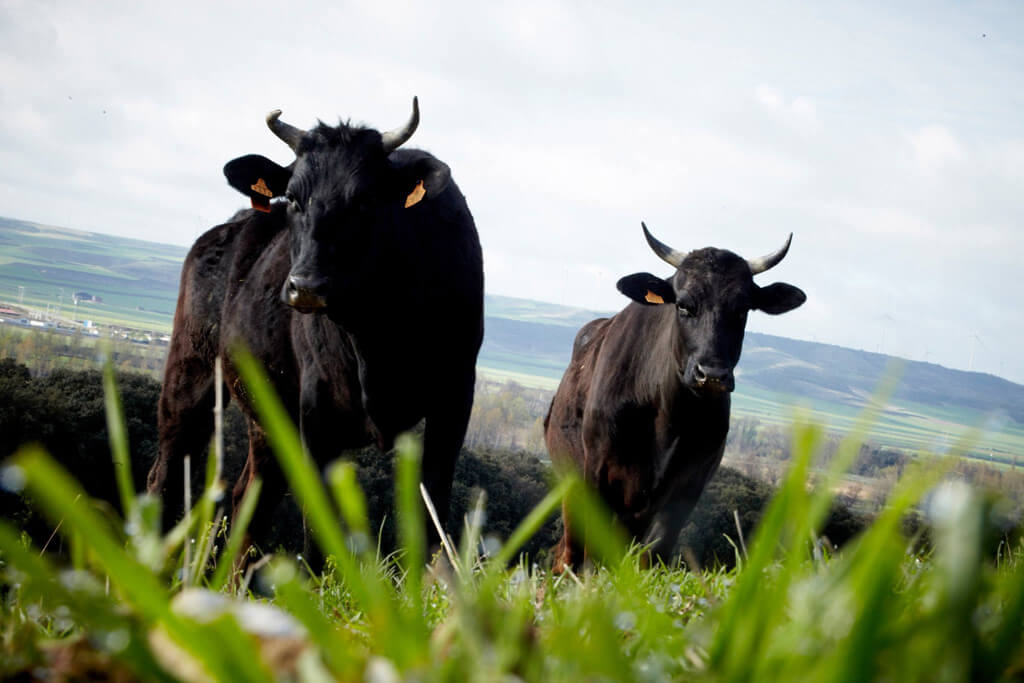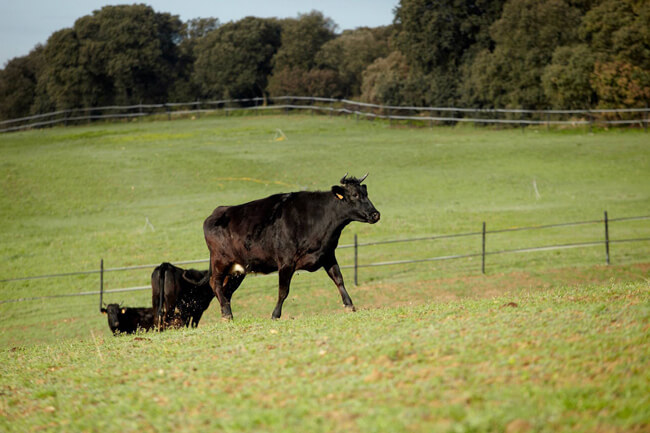
Wagyu or Kobe? All about the origin of the Wagyu breed
A few years ago almost no one, unless they were a true connoisseur of Japanese gastronomy, had heard the word “wagyu”. At that time, it was somewhat more common to hear about Kobe beef and Kobe beef in general. In recent years, thanks above all to our work raising awareness of the incredible quality of Wagyu beef, more people have heard this term. But many still recognize only the term Kobe, and believe that wagyu is something very different, when in reality it is not.
With this article, we aim to clarify once and for all what wagyu is and what can be called Kobe, according to the rules that govern the Kobe designation of origin seal.
Wagyu vs Kobe: Is there that much difference?
To begin with, a curiosity; In pure form, a Kobe meat cannot be such until after the animal has been slaughtered. We'll tell you why right away.
For better understanding, we will start from the premise that all Kobe meats come from the Wagyu breed, but not all Wagyu meats can be called Kobe, according to the regulations dictated by the Japanese government to which we were referring to before.
Our wagyu cattle, although they are of Japanese 100% origin, are born and raised on our farm in Vizmalo (Burgos), with the same special conditions that characterize the breeding of Kobe beef, but official regulations do not allow us to call them Kobe beef. , No need that makes us!
Anyone who has tried our wagyu knows that quality is not decided by the seal of any government, but by the breed itself (you will not find other wagyus like these outside of Japan), the marbling of the meat and the exquisite treatment we give to our livestock. Therefore, we can assure you that in terms of quality our wagyu beef is on par with kobe beef, at least what any meat lover has in mind when they hear about the famous Japanese meat.
The real differences between wagyu and Kobe beef come from exclusively in Japan and, contrary to what many think, they are administrative type more than biological or culinary. There are four types of wagyu beef, and only one of them, the Tajima, is a candidate to become Kobe beef, after slaughter and if it meets all the specifications required by the designation of origin seal.
Types of wagyu
Wagyu [和牛] in Japanese means “Japanese beef.” It is, therefore, the native breed of cattle typical of the country of the Rising Sun.
It is believed that Wagyu cows have that level of fat as a matter of survival. In Japan the winters are cold and the grasses are not especially rich in vitamin A. It is estimated that at some point in evolution they achieved the ability to increase the production of intramuscular fat on their own, which today is the characteristic of this race.
There are four lines within the Wagyu breed:
Black Japanese Beef or Tajima
Originally it was an animal used for field work, which appears mentioned in Japanese texts as early as the 2nd century AD. Later, during the Meiji period (19th century) the breed was improved, crossing it with other foreign varieties, for use in meat production. Black Japanese beef was certified as indigenous Japanese beef in 1944 and is the most common type of beef in Japan, accounting for more than a 90% of the total Japanese indigenous cattle. Its meat is characterized by having a high level of marbling (also called infiltration or marbling).
It is the one that grazes on our Vizmalo farm, and also the only one that can provide authentic Kobe meat.
Tajima wagyu meat is usually called Kobe beef, since the breed is native to that part of Japan, where the rugged orography allowed it to It did not interbreed with other animals for centuries and maintained unique characteristics. But, as we have mentioned at the beginning and we will see later in detail, since 2015, to be able to enjoy the Kobe beef certificate it is not enough to come from this breed, but to meet a series of administrative and technical requirements.
Brown Japanese beef
Also known as akaushi or red beef. After several crossings, it was certified as a native Japanese breed in 1944. This type of bovine breed is characterized by having low levels of fat compared to the black breed (Tajima).
This type of beef is mainly raised in the Kumamoto and Kochi regions and accounts for around 5% of Japan's total wagyu production.
Shorthorn Japanese Beef
It is a breed bred mainly in the Tohoku region (northeast of Japan). It was certified as a Japanese indigenous breed in 1957 after several crosses with other breeds. Its meat is characterized by having low levels of fat and marbling, as well as being rich in glutamic acid.
Japanese hornless beef
Breed certified as indigenous Japanese in 1944 only after being crossed with the Aberdeen Angus beef breed from Scotland. Like the shorthorn cattle breed, its production is symbolic. The meat of this type of beef is characterized by being leaner and rich in amino acids.
What is and is not certified Kobe beef
To be Kobe meat it has to be wagyu, and more specifically, as we have seen, “black” type beef, in its Tajima variant. If this is met, they “only” have to meet certain requirements:
– The beef must not have suffered from mad cow disease.
– The cow must be a virgin or a castrated male, always of the Tajima line.
– The beef must have been born in Hyogo Prefecture from a cow of the same variant.
– The cow must have been raised by a certified farmer from the mentioned prefecture.
– The cow must have been slaughtered by a certified slaughterhouse in the prefecture in question.
In technical matters, Kobe certified wagyu meat must meet the following specifications:
– Marbling index between 6 and 12 (this is perhaps the most important, because it is what really determines the tenderness and flavor of the meat; in that sense, The meat from Finca Santa Rosalía has nothing to envy, which does receive the official name “Kobe.”, since for example all our loins have at least an infiltration or marbling of 6 (specifically, between 7 and 8 for the complete loins, and between 6 and 8 for the skin loins). In addition to the marbling index, the fatty acid profile of the infiltrated fat (determined by the cattle's diet) is very important since, in addition to conferring the final flavor of the meat, in the case of wagyu from Finca Santa Rosalía it also provides be heart-healthy, due to its high content of omega 6 and 9.
– A or B in the use of the beef.
– Once the entrails and head have been removed, the weight of the carcass must be equal to or less than 470 kg.
– The meat must be firm.
If and only if all of these requirements are met, can wagyu beef be certified as Kobe beef.
Origins of the Wagyu breed outside of Japan
The Wagyu breed is native to Japan and does not occur naturally anywhere else. In the 1970s, some Wagyu males were exported to the United States from Japan for the first time. There, they were mixed with Angus type cows.
The waygu part provided the enormous level of unsaturated fats to the meat. The Angus, the quantity, since cows of this type are abnormally large.
In 1994 the first export of Wagyu cows took place, so that it was no longer necessary to cross the males with Angus cows or any other variety, but for the first time real Wagyu cattle could be raised outside of Japan.
This is how our founder, Patxi Garmendia, he met wagyu cattle, and since then he became obsessed with being able to raise this cattle, in its purest form, in Spain, something that no one had done before and that many considered impossible. Garmendia did not stop until he managed to bring semen from pure specimens from Australia, to use it in purebred wagyu cows which he bought in Japan.
That is the origin of the more than 6,000 copies that now graze on our Vizmalo farm and have made Burgos wagyu one of the most appreciated delicacies in Spain by good meat lovers. To find meat that is on par, it must be meat imported from Japan, something that has only happened, and in very limited quantities, since 2014.
In short, if you eat real wagyu meat in Spain, there is a good chance that it comes from our farm, since we are suppliers to large distributors such as Makro and the largest commercial chains in Spain, such as El Corte Inglés, Carrefour, Alcampo, Eroski , etc.




